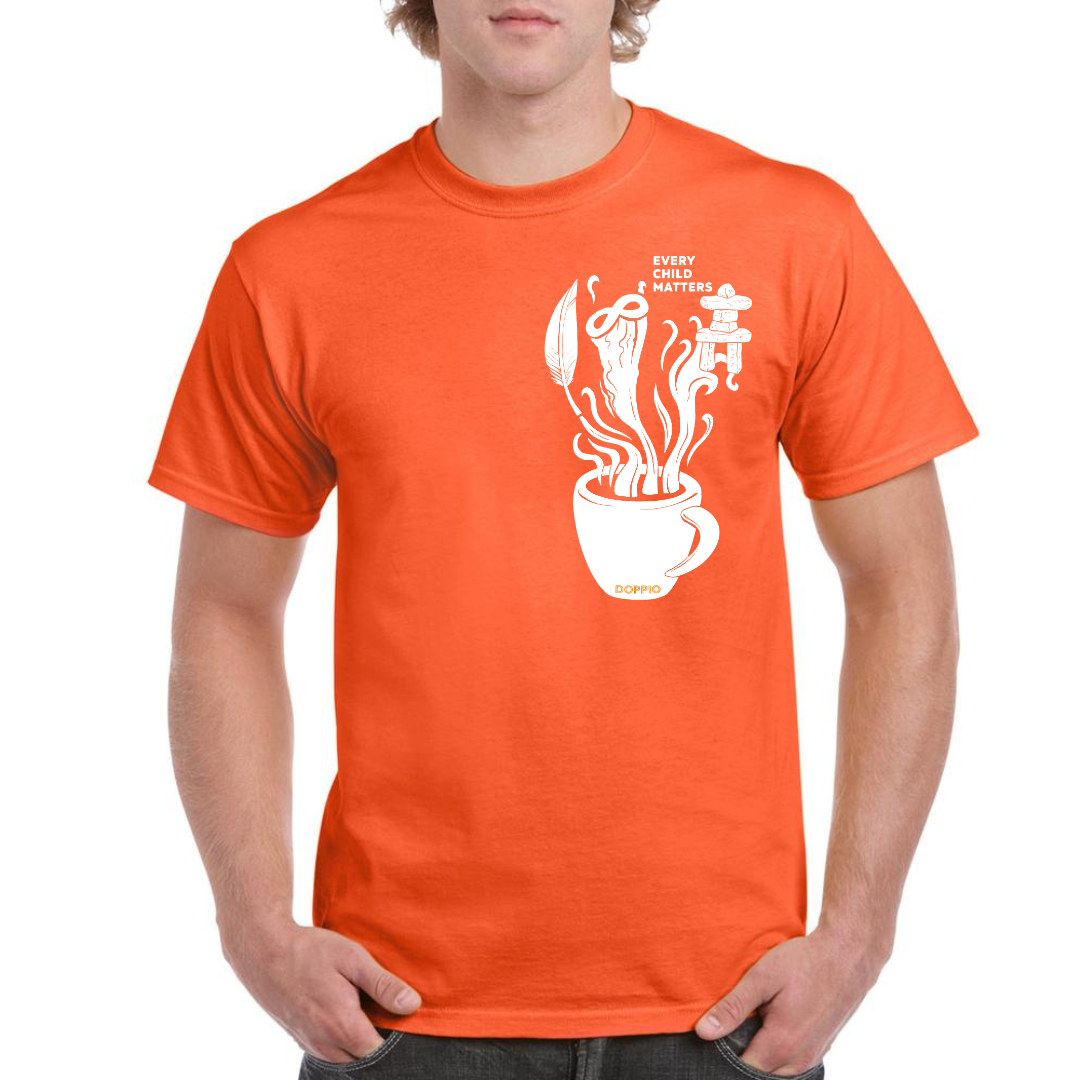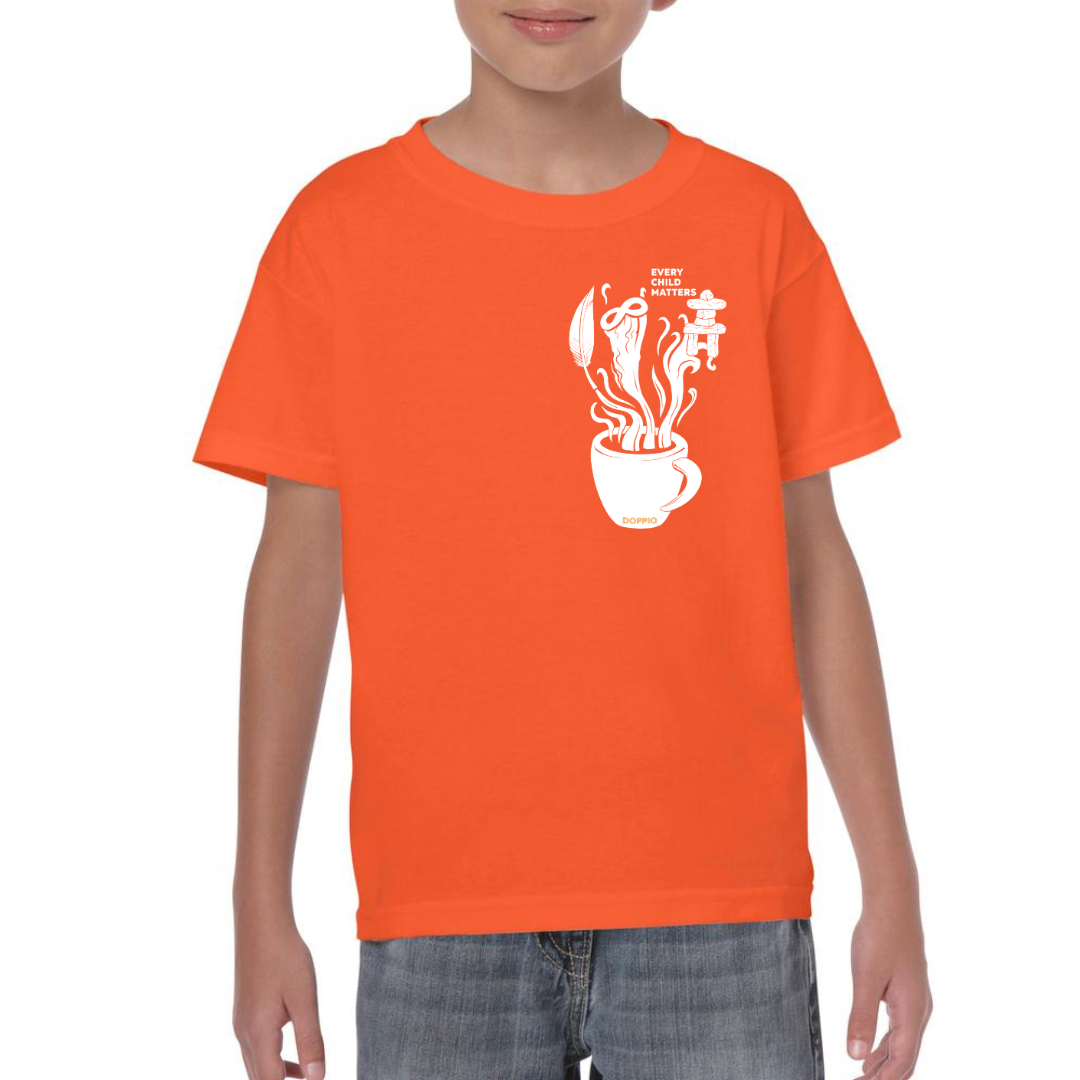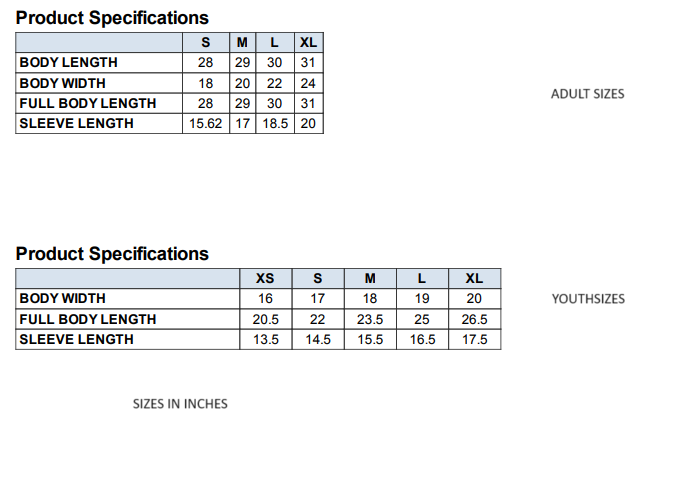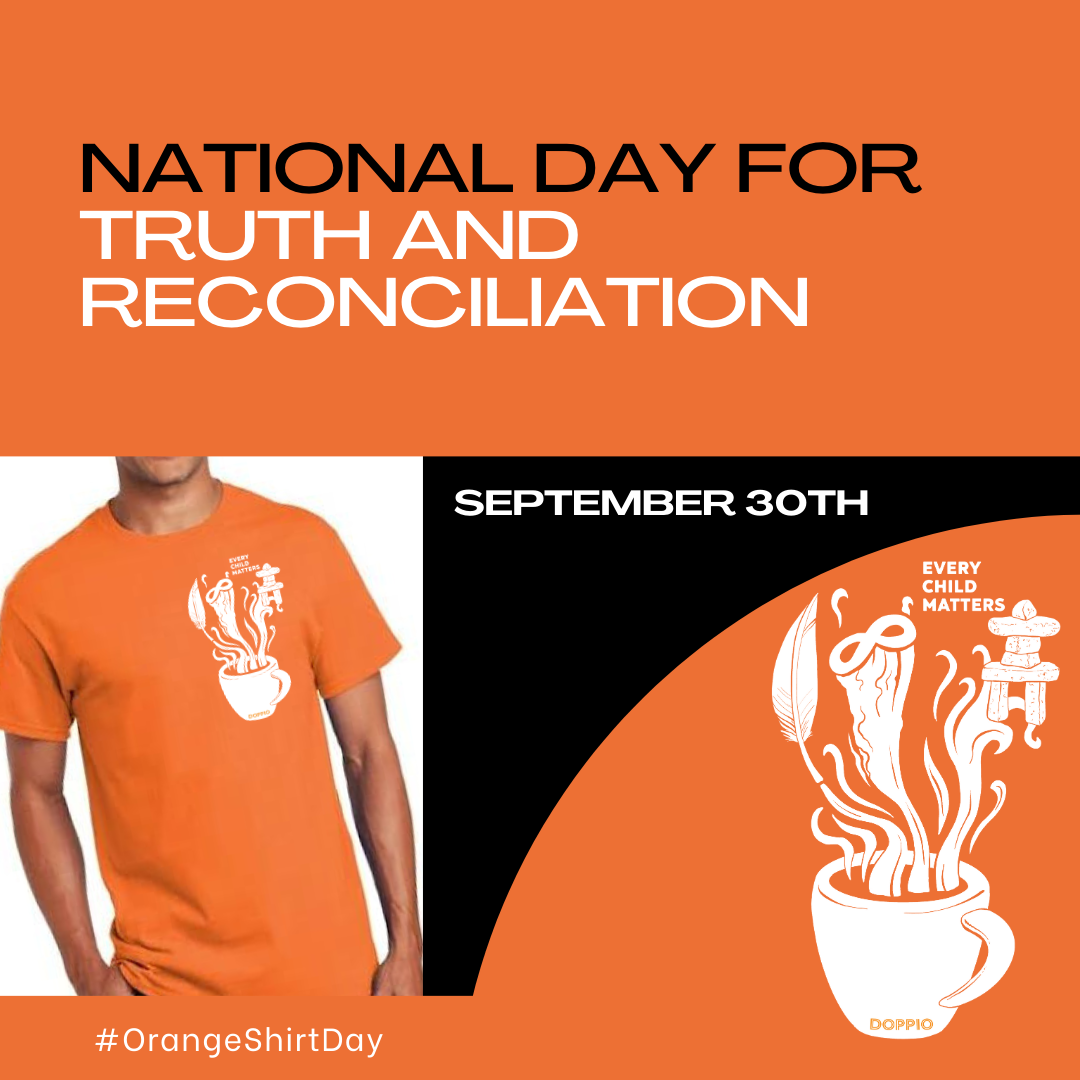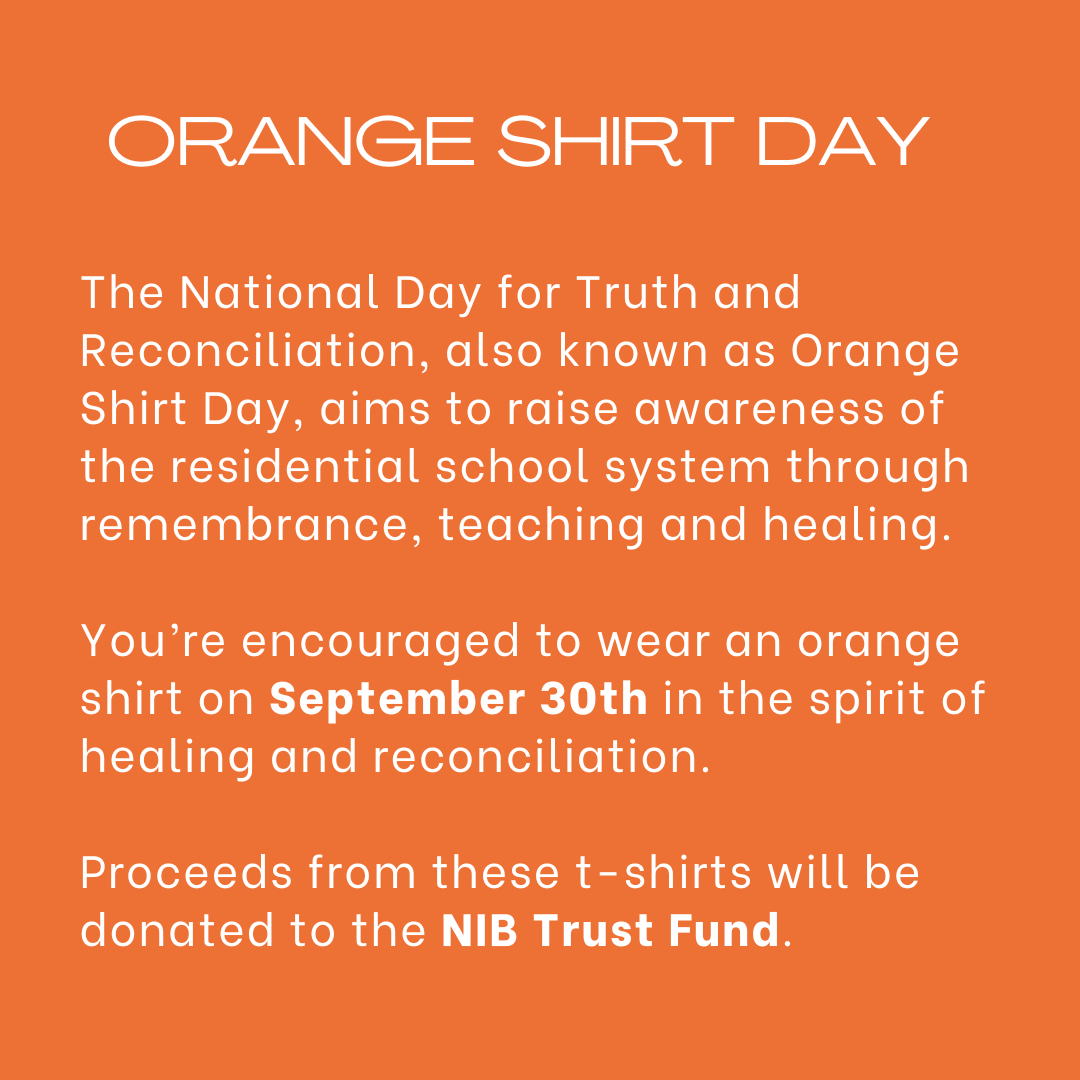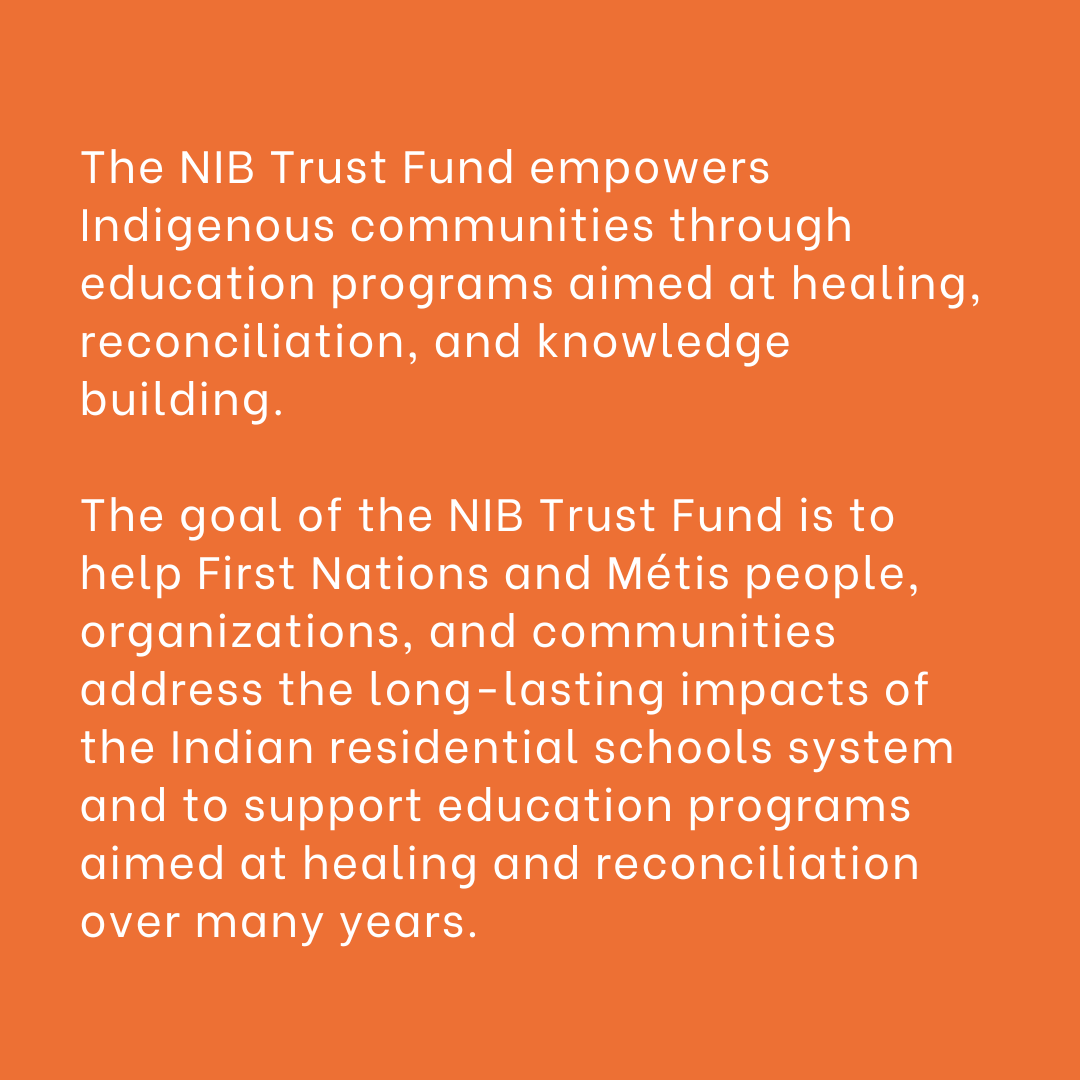Doppio
Orange Shirt Day | National Day for Truth and Reconciliation | Residential School Survivors | PROCEEDS DONATED
The National Day for Truth and Reconciliation, also known as Orange Shirt Day, aims to raise awareness of the residential school system through remembrance, teaching and healing.
You’re encouraged to wear an orange shirt on September 30th in the spirit of healing and reconciliation.
Proceeds from these t-shirts will be donated to the NIB Trust Fund.
Couldn't load pickup availability
Specs
Specs
Gildan Heavy:
- Seamless rib at neck
- Taped shoulder-to-shoulder
- Double-needle stitching throughout
- Quarter-turned to eliminate center crease
- 7/8" collar
- Classic fit
- 8.8 oz./lin.yd., 100% preshrunk cotton
- Made with sustainably and fairly grown USA cotton
**See sizing chart


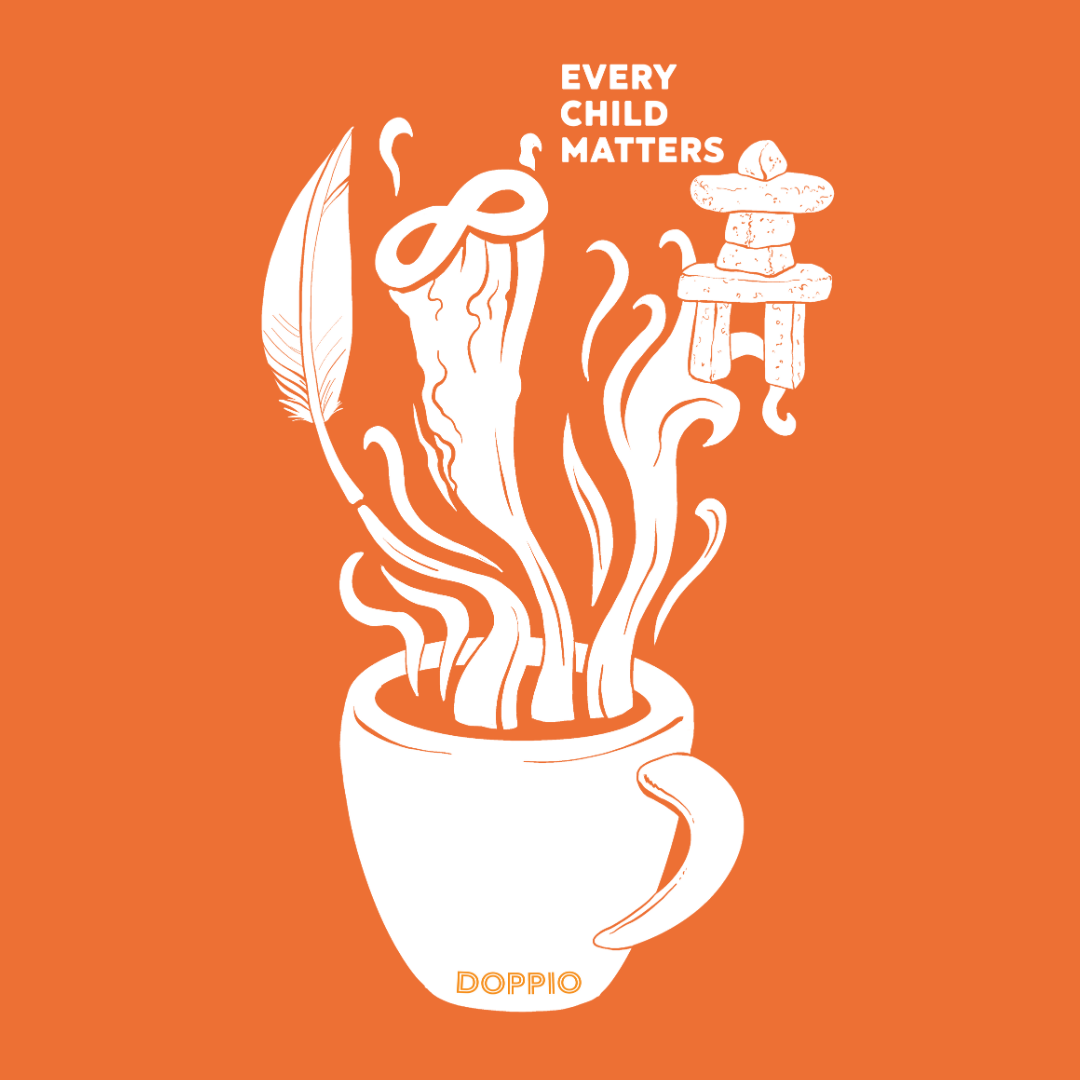
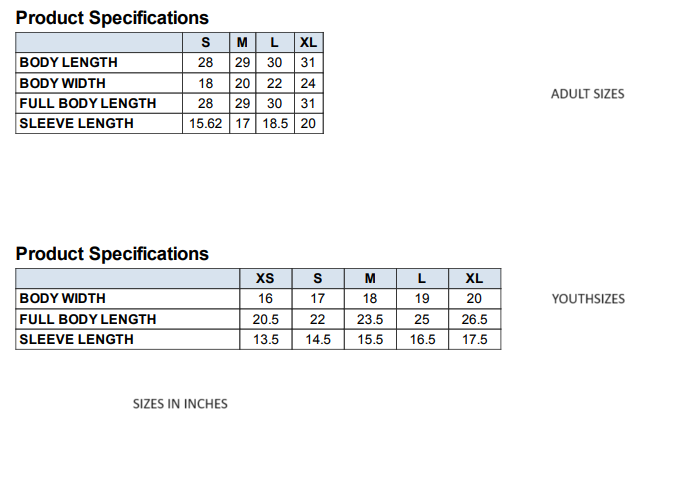
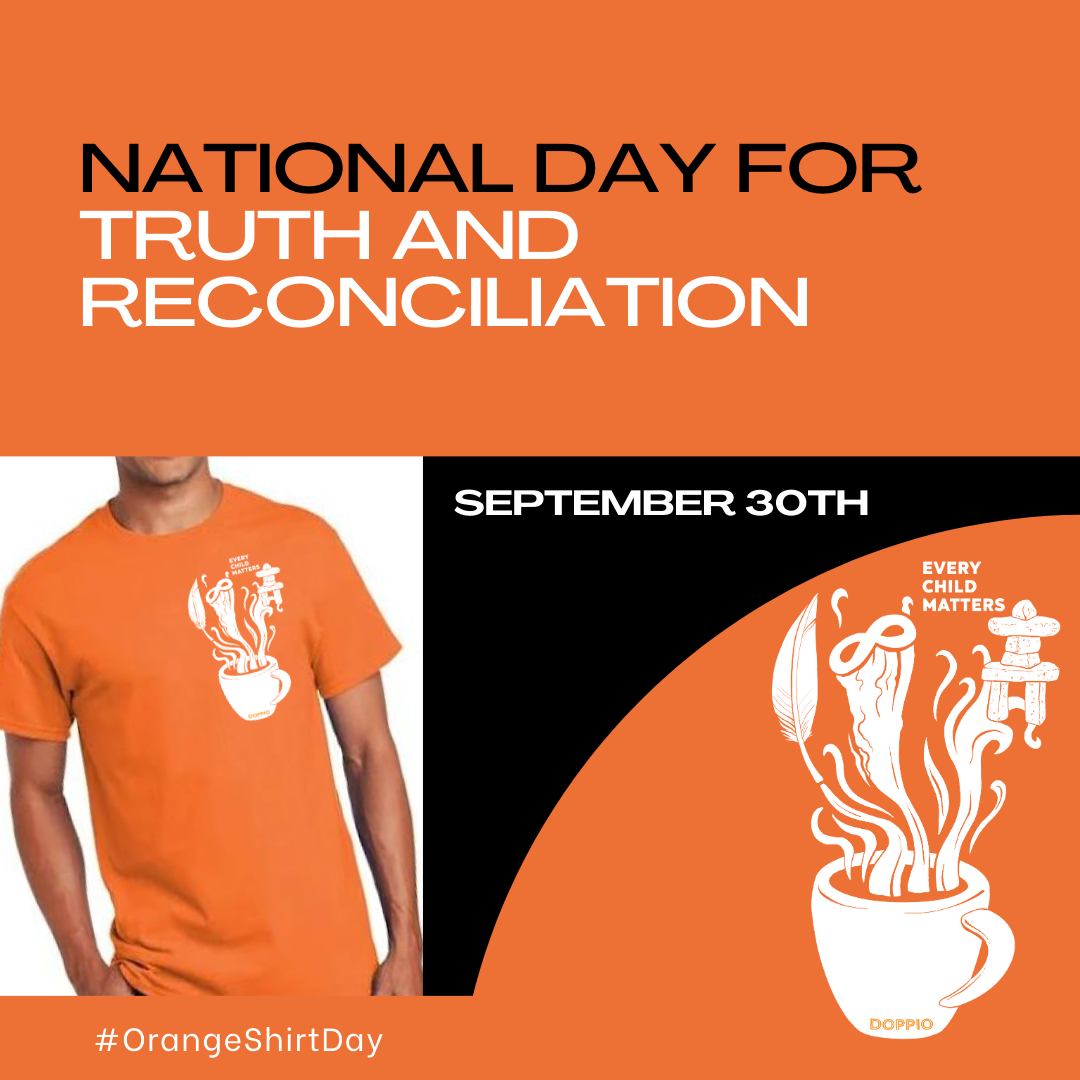
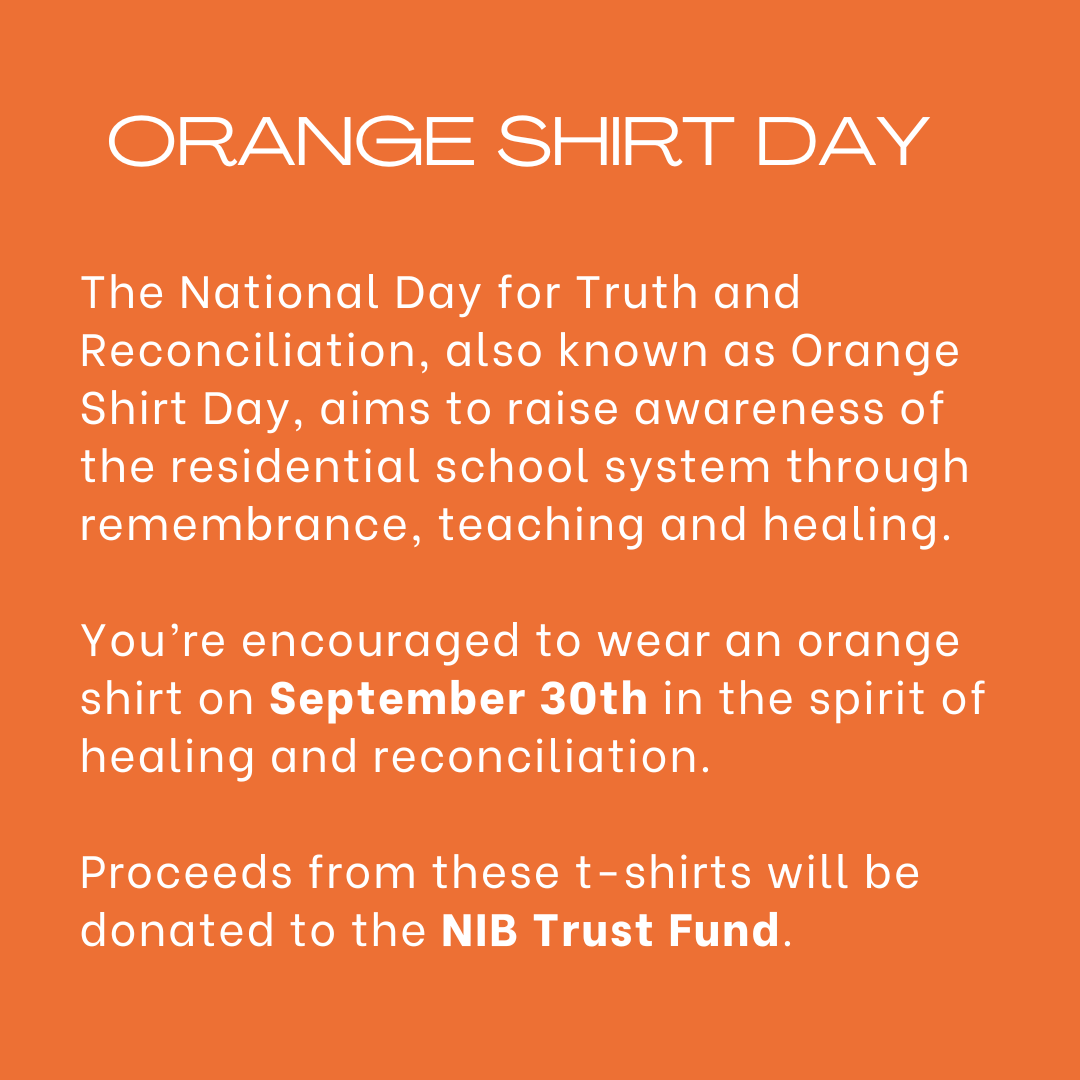
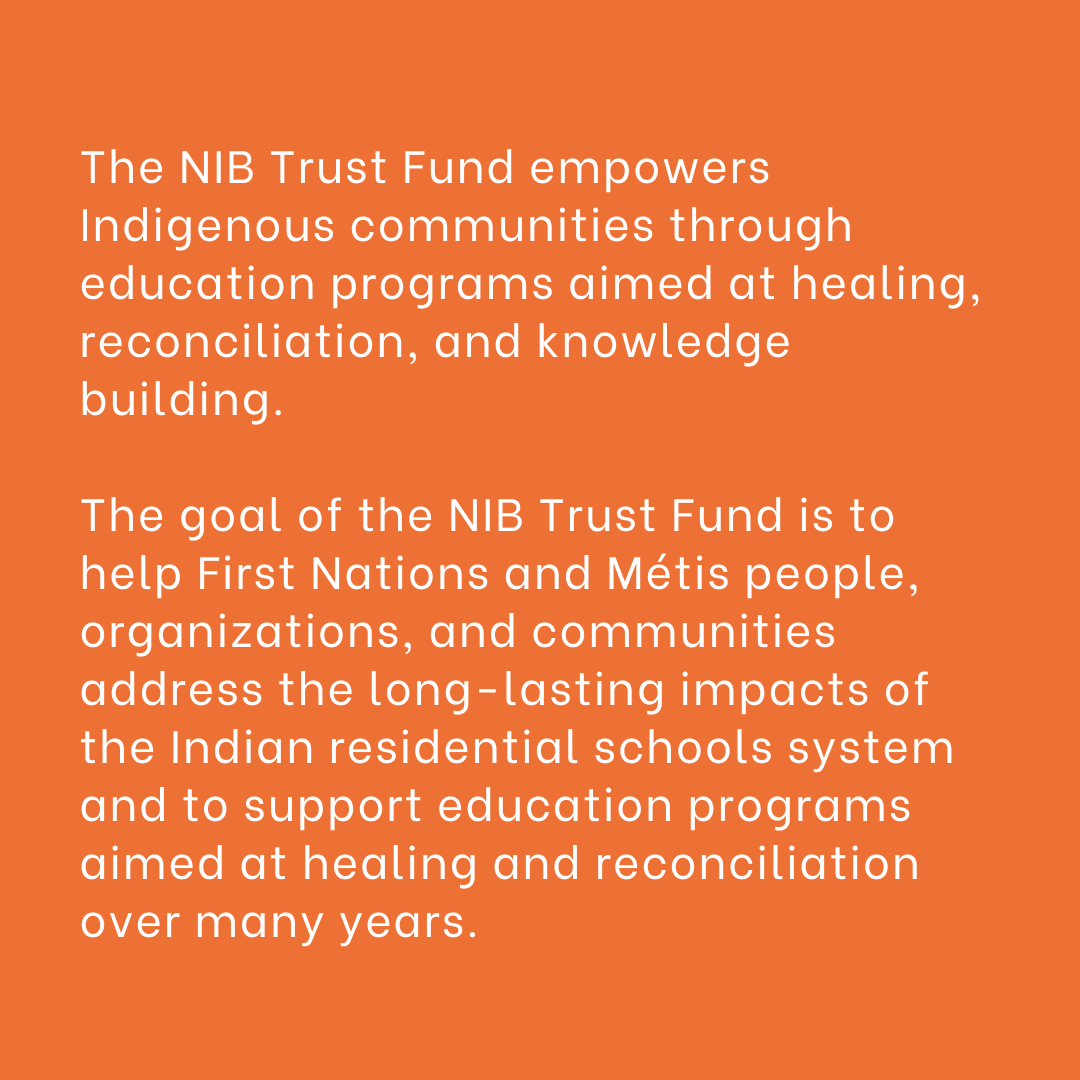

Details
This year, for the National Day for Truth and Reconciliation we are donating proceeds from these t-shirts to the NIB Trust Fund: Empowering Indigenous communities with education, healing, and cultural preservation initiatives. - “Our roots in Indigenous wisdom drive change and resilience.”
In the spirit of healing and reconciliation, you’re encouraged to wear an orange shirt on September 30th.
The National Day for Truth and Reconciliation, also known as Orange Shirt Day, aims to raise awareness of the residential school system through remembrance, teaching and healing.
Symbols:
The Eagle Feather – The Eagle is regarded with high respects by First Nations as it flies closest to the Creator. The eagle feather a symbol for many things such as peace, friendship, honor, wisdom, respect, strength and a the link between the People and the Creator.
Infinity sign – A sign adopted by the Métis representing the mixing of two distinct cultures and symbolizing the faith that Métis people will exist forever.
Inukshuk – Meaning “to act in the capacity of a human”, inukshuit (plural) are placed throughout the Arctic landscape acting as “helpers” to the Inuit. They serve many functions including guiding travellers, warning of danger, assisting hunters and marking places of reverence.

